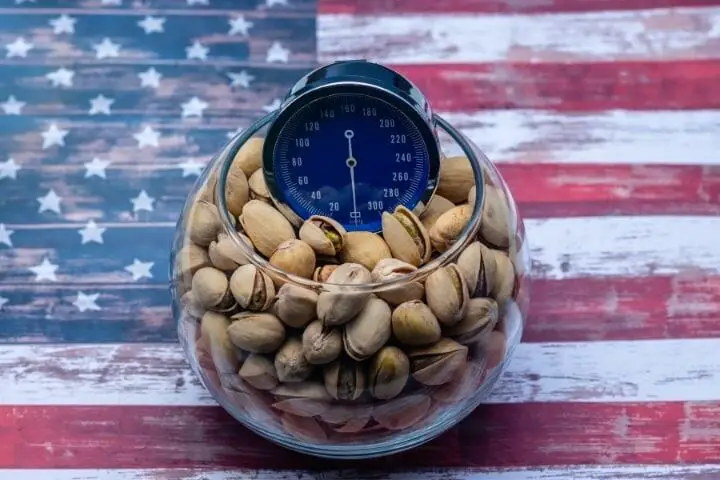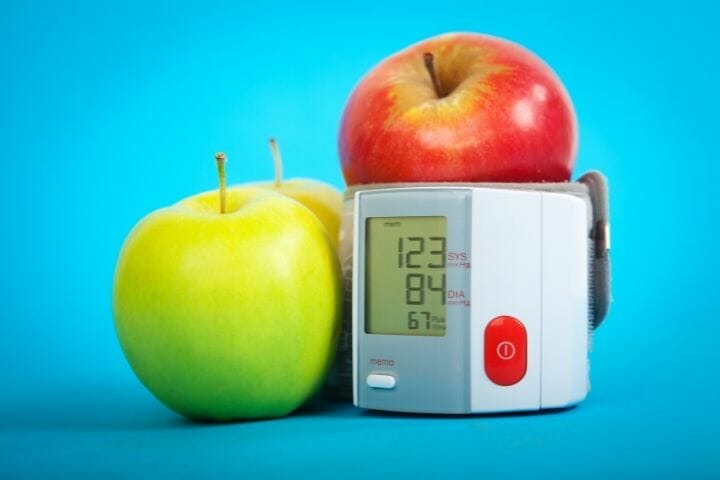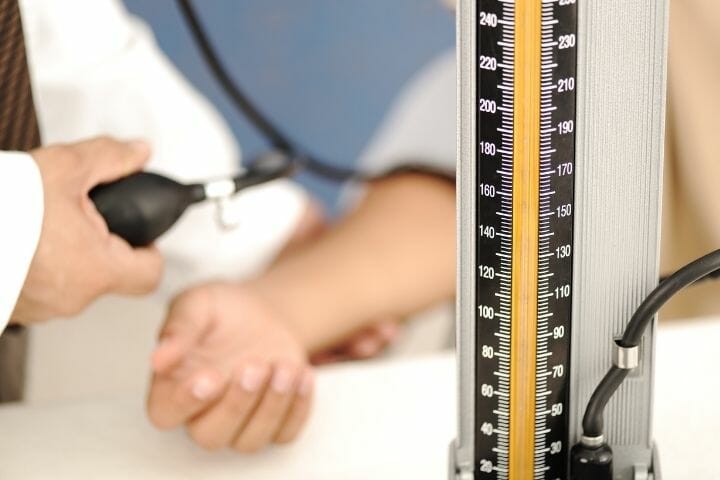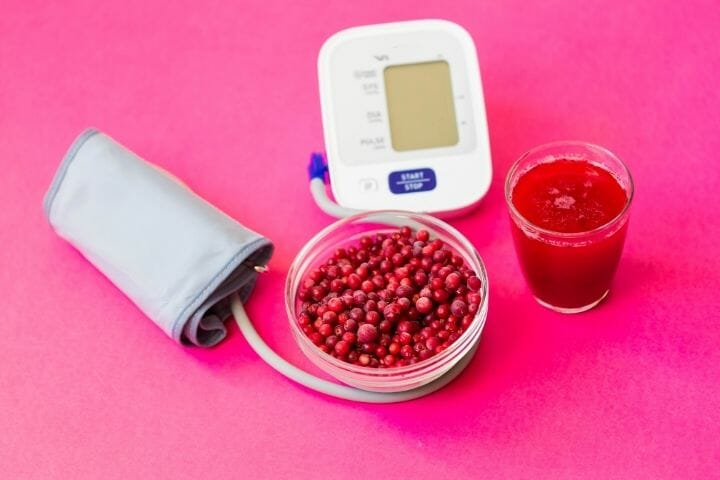Can you eat your way to a lower blood pressure? Here is a list of 10 healthy foods that will help you regulate your high BP.
Contents
Hypertension or high blood pressure is one of the most widespread diseases in the world. Nearly 103mn Americans have this disease.
People who have high blood pressure have elevated systolic blood pressure values above 130 mm Hg or more. The diastolic blood pressure reaches 80 mm hg or more.

While doctors prescribe medicines to control blood pressure levels, it is essential to eat correctly if you suffer from high blood pressure. You can easily maintain your blood pressure levels by adopting healthy eating habits.
Which Foods Help Balance Blood Pressure Levels?
Citrus fruits:
Citrus fruits are helpful in maintaining blood pressure levels. They consist of minerals, vitamins, and plant compounds. These plant compounds keep your heart healthy and reduce the risk of heart diseases. You can include citrus fruits like grapefruit, lemons, oranges, and gooseberries in your diet.
The citric acid and flavonoid content present in citrus fruits reduces blood pressure levels. Drinking citrus fruit juices may lower blood pressure.
However, grapefruit juice may react with blood pressure-lowering medications. Make sure that you consult your doctor before consuming it.
Omega 3 Rich Fish
Fatty fishes are a good source of Omega 3 fatty acids. It is known to have excellent heart health benefits. Omega 3 fatty acids present in fatty fishes are known to reduce the levels of blood vessel constricting compounds called oxylipins.
You can increase your Omega 3 fatty acid intake to reap the benefits. It also reduces blood pressure by reducing inflammation. It is also known to reduce hypertension.
Omega-3 fatty acids are present in the categories DHA and EPA. Both of them are essential for good health. If you do not get enough Omega 3 fatty acids through your diet, you can consume Omega 3 supplements.
Pumpkin seeds
One of the best foods for healthy and glowing skin, pumpkin seeds are a great source of nutrients. The nutrients present in pumpkin seeds are potassium, arginine, magnesium, and essential amino acids.
These amino acids are required for the production of nitric oxide in the body. These nutrients are crucial for relaxing the blood vessels and reducing blood pressure. Pumpkin seed oil is also great for lowering blood pressure.
Beans and lentils:
Beans and lentils are rich sources of nutrients that can regulate blood pressure and consist of nutrients like potassium, magnesium, and fiber.
If you incorporate beans and lentils into your diet, it will reduce your blood pressure. Beans and lentils are rich sources of nutrients, and they should be included in the diet of people with or without hypertension.

Berries:
Berries are tasty and have several health benefits. They reduce the risk factors of high blood pressure. It consists of anthocyanins and antioxidants. This gives a vibrant color to the berries.
Anthocyanin elevates the nitric oxide levels in the blood. This leads to a reduction in the production of blood vessels restricting molecules. Thus it lowers blood pressure levels.
Pistachios:
This dry fruit is highly nutritious and is known to help reduce blood pressure levels. It has a high nutritional value.
These nutrients are essential for blood pressure regulation and heart health. It also contains potassium. Among all the dry fruits, pistachios are the best at regulating blood pressure levels.
Celery:
Celery is a vegetable that is known to regulate blood pressure. It consists of compounds called phthalides, which help relax blood vessels and lower blood pressure.
Cooked celery and other vegetables are nutritious and are known to reduce blood pressure.
Tomatoes:
Tomatoes are rich in various nutrients. They contain potassium and a carotenoid pigment named lycopene. Lycopene is known to have multiple beneficial effects on heart health.
Eating tomato products in moderation may reduce heart risk like high blood pressure. You can consume tomatoes regularly to regulate your blood pressure levels.
Broccoli:
Broccoli is known for its health benefits. It promotes our heart health. Including any kind of cruciferous vegetable in your diet can help you reduce your blood pressure. Broccoli and other such vegetables contain various flavonoid antioxidants as well.
Broccoli lowers blood pressure by increasing blood vessel function. It increases the nitric oxide levels in our body, which promotes heart health and reduces blood pressure.
Greek yogurt:
Greek yogurt is a rich source of nutrients and minerals. It consists of potassium and Calcium. It is known to regulate blood pressure. Studies have indicated that people who take at least three servings of dairy per day are known to have a 13% lower risk of high blood pressure.
It was investigated that increasing your daily intake is known to reduce at least 5% risk of hypertension. You can include Greek yogurt in your diet because of its excellent nutritional value.

Flax and chia seeds:
Chia seeds and flax seeds are both highly nutritional seeds. These are power-packed with nutrients. They contain essential nutrients like fiber, magnesium, and potassium that help regulate blood pressure levels. Chia seeds have lots of benefits and high nutritional content. Flax seeds are a good source of omega 3 fatty acids. Eating flax seeds regularly will reduce your blood pressure levels.
A Whole-Grain Diet Helps Regulate Blood Pressure
Whole grains are good for health. It is said that eating 30% whole grains in your diet every day reduces the risk of high blood pressure by 8%. They are an excellent source of folate, iron, fiber, potassium, magnesium, selenium.
What are some of the whole grains:
- Whole-grain cornmeal
- Whole grain cereals
- Oats
- Popcorn
- Millet
- Barley
- Dry rye bread
- Wild rice
- Quinoa
- Whole wheat bread.
What are the health benefits of whole grain?
- It decreases the risk of insulin resistance.
- It reduces blood vessel damage.
- It enhances our potassium levels. High potassium levels are known to maintain high blood pressure.
- It helps you manage weight since eating helps you feel satisfied.
If you have high blood pressure, eating whole-grain foods will help you regulate your blood pressure levels.
Whole grains are rich sources of fiber, and not all whole grains consist of high fiber content. Wheat is known to have the highest fiber content. Brown rice has the least fiber content.
The fiber keeps you full for a long time, which helps you reduce your calorie intake and thus helps manage weight as well.
Your diet must consist of all the essential nutrients. It should include vitamins, minerals, proteins, carbohydrates, and healthy fats.
You can balance out your meals and include a portion of whole grains in your meal. You can change the whole grain you take at least twice a week. Experimenting with different dishes enables one to try out and find ones which you like the best.

Wrap up:
With an increase in modernization and sedentary lifestyle, high blood pressure levels have become a major factor of concern. Managing blood pressure levels is essential since high blood pressure leads to heart diseases.
You can consume medicines to regulate your blood sugar levels. But, nutrition is the key in managing various kinds of disorders.
If you try to repair anything internally, you won’t suffer from this disease again. Are you the one who wants to naturally manage your blood pressure levels? The best way to do this is to follow a healthy diet.
We hope we were able to help you find the right foods to add to your diet and bring down your BP levels. If you have questions about the article, do not hesitate to write to us and we will answer back as quickly as we can.
